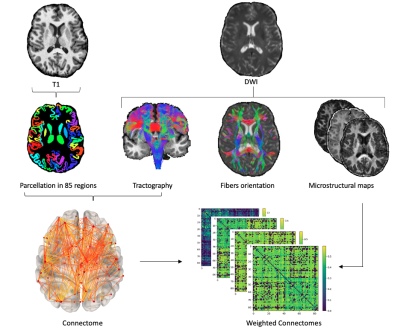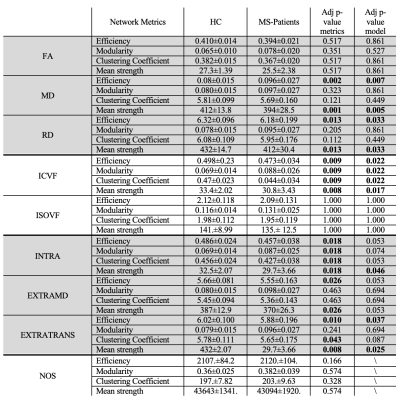Sara Bosticardo1, Simona Schiavi1, Sabine Schaedelin2, Po-Jui Lu3,4, Muhamed Barakovic2,3, Matthias Weigel2,3,5, Ludwig Kappos3,4, Jens Kuhle3,4, Alessandro Daducci1, and Cristina Granziera2,3,4
1Department of Computer Science, University of Verona, Verona, Italy, 2Departments of Medicine, Clinical Research and Biomedical Engineering, Neurology, University Hospital Basel and University of Basel, Basel, Switzerland, 3Department of Medicine and Biomedical Engineering, University Hospital Basel and University of Basel, Neurologic Clinic and Policlinic, Translational Imaging in Neurology (ThINk), Basel, Switzerland, 4Research Center for Clinical Neuroimmunology and Neuroscience, Basel, Switzerland, 5Department of Radiology, Division of Radiological Physics, University Hospital Basel, Basel, Switzerland
1Department of Computer Science, University of Verona, Verona, Italy, 2Departments of Medicine, Clinical Research and Biomedical Engineering, Neurology, University Hospital Basel and University of Basel, Basel, Switzerland, 3Department of Medicine and Biomedical Engineering, University Hospital Basel and University of Basel, Neurologic Clinic and Policlinic, Translational Imaging in Neurology (ThINk), Basel, Switzerland, 4Research Center for Clinical Neuroimmunology and Neuroscience, Basel, Switzerland, 5Department of Radiology, Division of Radiological Physics, University Hospital Basel, Basel, Switzerland
Comparing 3 different diffusion-based microstructural models to weight the structural connections and derive networks properties, we found that microstructural maps reflecting intra-axonal signal fractions are the most sensitive to multiple sclerosis.

Figure 1: Flowchart for the construction of structural connectivity networks based on tractometry. Combining the T1 parcellation, the tractogram and 3 different diffusion models, we built the connectomes weighted by different microstructural maps and we compared their topological properties.

TABLE 1: Group comparison performed with the linear robust model, where Gender, Age and Density are covariates. A Holm Post-Hoc correction was applied (i) for each network metrics of each microstructural map (Adj p-value metrics) and (ii) for each network metrics extracted from all microstructural maps of every diffusion model (Adj p-value model) to account for multiple comparison. Statistically significant results are highlighted in bold.